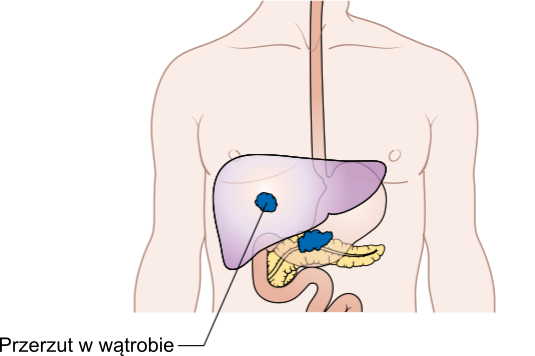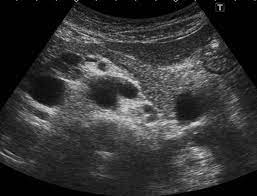Why is it difficult to diagnose pancreatic cancer?

In the dominion of medical ambiguities, few challenges are as daunting as diagnosing pancreatic cancer hence the question: Why is it difficult to diagnose pancreatic cancer? It lies in the intricate biology of the pancreas itself, a dual-function organ nestled deep within the abdomen, that is, because the organs are located deep in the abdomen and hidden behind other organs
Picture a stealthy adversary, concealed within the intricate pathways of the body, evading detection until it strikes with devastating force.
This elusive malignancy poses a formidable puzzle for healthcare professionals and patients alike, its subtle onset and nonspecific symptoms often masking its presence until it reaches an advanced stage.
Yet, amidst the complexity and challenge, there is hope. By unraveling the intricacies of diagnosing pancreatic cancer, we can empower ourselves with knowledge and vigilance.
Through awareness campaigns, medical advancements, and proactive screening initiatives, we can improve our ability to detect this stealthy adversary in its earliest stages, when treatment options are most effective and survival rates are highest.
cancer remains one of the most challenging cancers to diagnose, primarily due to its asymptomatic nature in the early stages and the lack of specific screening tests.
Understanding the complexities and challenges associated with pancreatic cancer diagnosis is crucial for improving early detection rates and ultimately enhancing patient outcomes.
Urgency of Pancreatic Cancer Diagnosis
Pancreatic cancer is often diagnosed at an advanced stage when treatment options are limited and the prognosis is poor. The urgency of early diagnosis cannot be overstated, as it significantly impacts treatment success and patient survival rates.
Challenges in Diagnosing Pancreatic Cancer
Diagnosing pancreatic cancer is challenging due to several factors, including the location of the pancreas deep within the abdomen, the lack of specific symptoms in the early stages, and the difficulty in distinguishing pancreatic cancer from other benign pancreatic conditions.
Understanding Pancreatic Cancer
Overview of the Pancreas and Its Function
The pancreas is a vital organ located behind the stomach that plays a crucial role in digestion and blood sugar regulation. It produces enzymes that aid in digestion and hormones such as insulin that regulate blood sugar levels.
What Is Pancreatic Cancer?
Pancreatic cancer occurs when cells in the pancreas grow uncontrollably, forming a tumor. Most pancreatic cancers arise in the cells that line the ducts of the pancreas (exocrine tumors), while a smaller percentage develop in the hormone-producing cells (endocrine tumors).
Types of Pancreatic Cancer
Exocrine pancreatic cancer, which is the most common type, arises in the ducts of the pancreas and is typically more aggressive. Endocrine pancreatic tumors, also known as pancreatic neuroendocrine tumors (PNETs), develop in the hormone-producing cells and tend to grow more slowly.
Symptoms of Pancreatic Cancer
Early Symptoms
Early symptoms of pancreatic cancer can be subtle and nonspecific, often leading to delayed diagnosis. These symptoms may include abdominal pain, jaundice (yellowing of the skin and eyes), unexplained weight loss, and digestive issues.
Advanced Symptoms
As pancreatic cancer progresses, symptoms may become more pronounced and include severe abdominal pain, back pain, nausea, vomiting, and changes in stool color.
Why Symptoms Are Often Non-Specific
The pancreas is located deep within the abdomen, and tumors may not cause symptoms until they grow large enough to press on nearby organs or block the flow of digestive enzymes or bile.
Risk Factors for Pancreatic Cancer
Genetic Factors
Certain genetic mutations or inherited conditions, such as BRCA2 mutations or hereditary pancreatitis, can increase the risk of developing pancreatic cancer.
Lifestyle Factors
Smoking, obesity, a diet high in red and processed meats, and chronic pancreatitis are all associated with an increased risk of pancreatic cancer.
Medical History and Conditions
Individuals with a history of diabetes, chronic pancreatitis, or certain other digestive disorders may have a higher risk of developing pancreatic cancer.
Diagnostic Tools and Techniques
Imaging Tests
CT Scans: Computed tomography (CT) scans are often used to visualize the pancreas and detect any abnormalities.
MRI Scans: Magnetic resonance imaging (MRI) scans provide detailed images of the pancreas and surrounding structures.
PET Scans: Positron emission tomography (PET) scans can help determine if pancreatic cancer has spread to other parts of the body.
Blood Tests
Blood tests, such as the CA 19-9 test, can measure levels of certain proteins that may be elevated in people with pancreatic cancer, although this test is not specific to pancreatic cancer and can be elevated in other conditions.
Biopsy Procedures
Fine Needle Aspiration: A thin needle is used to extract a small sample of tissue from the pancreas for examination under a microscope.
Endoscopic Ultrasound-Guided Biopsy: An endoscope with an ultrasound probe is used to guide the biopsy needle to the pancreas for sample collection.
Challenges in Early Detection
The Silent Killer: Lack of Early Symptoms
Pancreatic cancer often does not cause symptoms in its early stages, making it difficult to detect until it has advanced.

Similarity to Other Conditions
Symptoms of pancreatic cancer, such as abdominal pain and weight loss, can mimic those of other less serious conditions, leading to misdiagnosis or delayed diagnosis.
Location of the Pancreas and Its Impact on Detection
The pancreas is located deep within the abdomen, making it difficult to visualize and detect early-stage tumors using standard imaging techniques.
Barriers to Diagnosis
Lack of Specific Screening Tests
Unlike some other cancers, such as breast or colon cancer, there are no widely accepted screening tests for pancreatic cancer in the general population.
Limited Awareness Among the General Population
Many people are unaware of the risk factors and symptoms of pancreatic cancer, leading to delays in seeking medical attention and diagnosis.
Challenges in Interpreting Test Results
Interpreting imaging tests and biopsy results for pancreatic cancer can be challenging due to the complex nature of the disease and the potential for false positives or inconclusive results.
Advancements in Pancreatic Cancer Detection
Emerging Biomarkers
Researchers are investigating new biomarkers, such as specific proteins or genetic markers, that may help detect pancreatic cancer at an earlier stage.
Genetic Testing Advancements
Advances in genetic testing allow for the identification of genetic mutations that increase the risk of pancreatic cancer, enabling early detection and intervention in high-risk individuals.
Improvements in Imaging Technology
Advancements in imaging technology, such as high-resolution CT scans and MRI techniques, provide clearer images of the pancreas and surrounding tissues, aiding in early detection.
Role of Healthcare Providers
Importance of Clinical Suspicion
Healthcare providers play a crucial role in considering pancreatic cancer as a potential diagnosis, especially in patients with risk factors or symptoms suggestive of the disease.
Communication Challenges
Effective communication between patients and healthcare providers is essential for ensuring that symptoms are properly evaluated and diagnostic tests are performed promptly.
Collaborative Approach Among Specialists
A multidisciplinary team of specialists, including oncologists, gastroenterologists, radiologists, and pathologists, is often needed to accurately diagnose and treat pancreatic cancer.
Patient Perspectives
Personal Stories of Delayed Diagnosis
Many patients with pancreatic cancer share stories of delayed diagnosis, highlighting the importance of raising awareness and improving early detection efforts.
Advocacy Efforts for Early Detection and Awareness
Patient advocacy groups and organizations are working to increase awareness of pancreatic cancer risk factors, symptoms, and the importance of early detection.
The Importance of Early Diagnosis
Impact on Treatment Options and Outcomes
Early diagnosis of pancreatic cancer significantly improves treatment options, including surgery, chemotherapy, and radiation therapy, leading to better outcomes and higher survival rates.
Survival Rates with Early vs. Late-Stage Diagnosis
The survival rate for pancreatic cancer is much higher when the disease is diagnosed at an early stage, underscoring the importance of early detection efforts.
Psychological Impact on Patients and Families
The emotional and psychological impact of a pancreatic cancer diagnosis can be profound, highlighting the need for compassionate care and support services.
Future Directions in Pancreatic Cancer Diagnosis
Research Initiatives for Early Detection Methods
Ongoing research is focused on developing new screening tests and diagnostic tools that can detect pancreatic cancer at an earlier, more treatable stage.
Role of Artificial Intelligence in Diagnostic Processes
Artificial intelligence (AI) algorithms are being developed to analyze medical imaging and pathology data, aiding in the early detection and diagnosis of pancreatic cancer.
Integrative Approaches to Screening and Prevention
Integrative approaches, such as combining genetic testing with imaging techniques and biomarker analysis, may enhance early detection efforts and improve outcomes for patients at high risk of pancreatic cancer.
Conclusion
In conclusion, diagnosing pancreatic cancer presents numerous challenges, from the lack of specific symptoms to the limitations of current screening tests.
However, advances in imaging technology, biomarker research, and multidisciplinary care offer hope for improving early detection rates and ultimately saving lives.
Increased awareness, advocacy, and collaboration among healthcare providers, researchers, and patient communities are essential for addressing these challenges and improving outcomes for individuals affected by pancreatic cancer.









